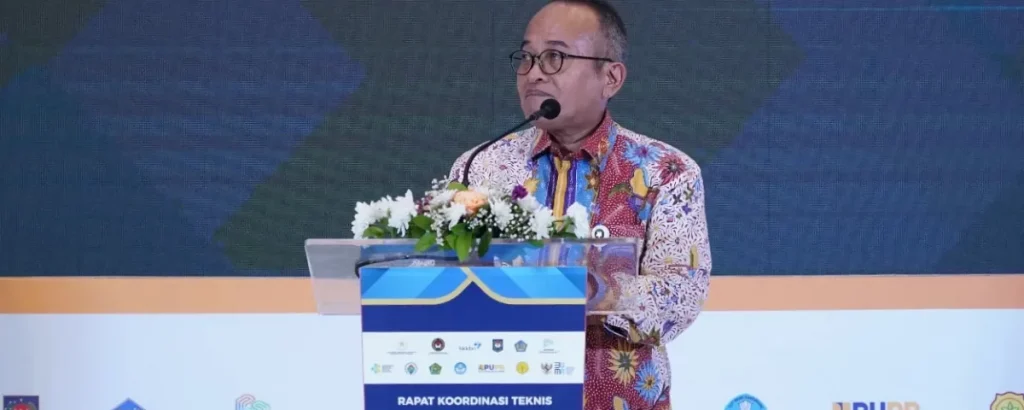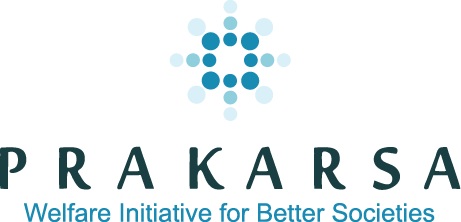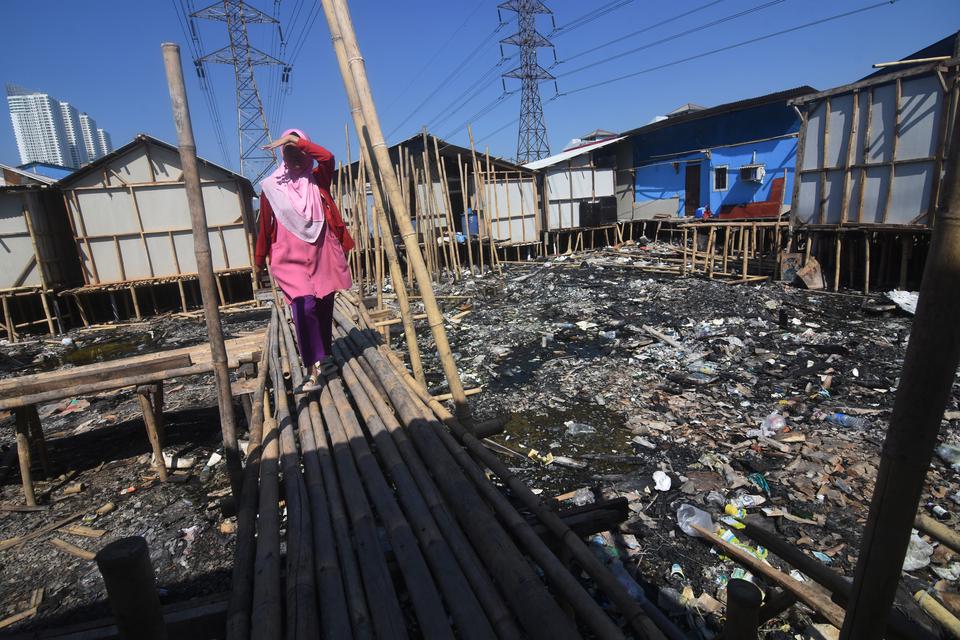
Jakarta, wapresri.go.id – More than 1000 people from 288 districts/cities and 14 provinces as well as from related Ministries/Institutions met at the Technical Coordination Meeting (Rakortek) and National Coordination Meeting (Rakornas) for the Acceleration of Stunting Reduction 2023 which took place on 4-7 October 2023 at the Grand Mercure Hotel Kemayoran, Central Jakarta. At this event, which was initiated and organized by the Secretariat of the Vice President (Setwapres), the stakeholders specifically discussed efforts to accelerate the reduction in stunting prevalence rates in order to achieve the target set by the government, namely 14% by 2024.
At the opening of the Coordination Meeting, Thursday (05/10/2023), the Coordinating Minister for Human Development and Culture Muhadjir Effendy, in his speech read by the Deputy for Coordination of Improving the Quality of Health, Population Development, Satya Sananugraha, said that the government together with all relevant stakeholders continued to carry out program convergence. central government, regional government, up to the village level to eradicate stunting.
Apart from that, in 2023 data collection will be carried out through the Indonesian Health Survey (SKI). According to him, the results of the survey will be an evaluation of the success of handling the acceleration of stunting reduction.
"I hope that the implementation of SKI in the regions can be supervised by the relevant Regional Apparatus Organizations (OPD), so that valid and reliable public health status data is available. "We must be optimistic that the stunting prevalence target of 14% in 2024 will be achieved, with a reduction target of 3,8% per year," he said.
Furthermore, the Coordinating Minister for PMK said that in an effort to orchestrate with all ministries/institutions and regional governments, a Roadshow for the Acceleration of Reducing Stunting and Extreme Poverty had been implemented in 33 provinces (from 38 expansion provinces) and 393 districts/cities to identify issues/constraints and solutions and affirmative policies to reduce stunting.
"From the results of the roadshow, obstacles and problems in the field have been mapped, both from the governance aspect, specific intervention aspects and sensitive interventions. "Recommendations for resolving each problem have also been submitted to regional leaders and are expected to be implemented," he said.
Following up on the results of the Stunting Roadshow, currently the Coordinating Ministry for Human Development and Culture together with related ministries/institutions are carrying out Integrated Monitoring and Evaluation in 14 stunting priority provinces and have completed implementation in 6 provinces. Based on the results of the integrated monev, it is known that there are several things related to governance aspects that still need attention.
"Coordination between implementers and operational support is still not optimal at the village to district/city level. Optimizing budget utilization targeting stunting, especially Physical DAK for Health Sector such as procurement of local PMT and non-physical DAK such as Family Planning Operational Assistance (BO KB)," he said Coordinating Minister for PMK.
"There are still regions that have not proposed providing standardized ultrasound and anthropometry. "It is hoped that this year, anthropometric equipment will be available at all posyandu and ultrasound equipment will be available at all community health centers for early detection of stunting," he added.
For this reason, on this occasion, the Coordinating Minister for Human Development and Culture asked the Regional Stunting Reduction Acceleration Team (TPPS) to optimally and routinely coordinate to increase convergence and solve existing problems. Including strengthening and developing the role of the Family Assistance Team (TPK) in preventing stunting incidents.
"I hope that all stakeholders will support all efforts to reduce stunting by accelerating the absorption of DAK related to stunting, optimizing APBD, Village Fund allocation, and increasing synergy between programs from the national to village level, so that program implementation is timely, effective and efficient," requested Muhadjir. .
"Coordinate and synchronize specific and sensitive interventions from upstream to downstream by optimizing the role of stakeholders. The program for fathers/mothers to foster stunted children must be implemented by involving existing resources," he said.
Previously, on the same occasion, the Head of the National Population and Family Planning Agency (BKKBN) Hasto Wardoyo said that since 2013 there has been a national policy to prevent and accelerate the reduction of stunting in the country. One of them is the issuance of Presidential Regulation (Perpres) Number 42 of 2013 concerning the National Movement for the Acceleration of Nutrition Improvement. Then it was continued with Presidential Decree Number 72 of 2021 concerning the Acceleration of Reducing Stunting.
"In 2022 after the Presidential Decree is issued, even though there are priority provinces or priority districts within them, all districts/cities are working on efforts to accelerate stunting reduction because there are Stunting Reduction Acceleration Teams in provinces, districts, even at the village and sub-district level. "There are 82.773 teams at the village and sub-district level," he explained.
According to Hasto, the trend of decreasing stunting prevalence rates in the country from 2013 to 2016 reached an average of 1,3% per year, namely from 37,2% in 2013 to 34% in 2016. Meanwhile, from 2016 to 2021 the average decreased by 1,6 .2021% per year and from 2022 to 2,8 the average decrease is 2022% per year. So, in 21,6 the stunting prevalence rate in Indonesia will be XNUMX%.
To achieve the target of a stunting prevalence rate of 14% in 2024, according to Hasto, in 2023 the budget allocation for ministries/institutions supporting stunting reduction acceleration programs will reach IDR 30 trillion. The details are IDR 1,2 trillion for support programs, IDR 2,1 trillion for specific interventions such as providing food, and IDR 26,7 trillion for sensitive interventions such as providing drinking water and sanitation, nutrition and health services, increasing awareness of care and nutrition, and increasing access. nutritious food.
"We have recorded all the achievements in efforts to reduce stunting, both specific and sensitive intervention programs, and can later be used as material for discussion," he said.
Furthermore, Hasto specifically explained the importance of specific intervention programs in efforts to reduce stunting such as socialization, education and communication to change people's behavior, especially pregnant women.
“Including the need for policy support regarding breastfeeding. In particular, exclusive breastfeeding still needs to be encouraged because it plays an important role, is cheap and easy. "Then it is also necessary to increase the scope of providing additional food to pregnant women and toddlers," he explained.
Then, regarding sensitive intervention programs, according to Hasto, one of the current problems is access to drinking water and sanitation. For example, currently there are still many people who are reluctant to defecate in toilets even though free toilets are provided.
"The special notes are related to sanitation, then also infrastructure development, as well as education and refocusing social assistance for families at high risk of stunting," he said.
However, Hasto remains optimistic that efforts to realize the stunting prevalence target of 14% by 2024 will be realized with support from all related parties.
"God willing, we are optimistic because we see that the decline in stunting has experienced a sharp increase, then the implementation and realization of commitments from central to regional levels and also including universities, media and the private sector is quite encouraging. "Apart from that, the mutual cooperation program involving Mr. Asus for Stunting Children (BAAS) is also extraordinary," he explained.
Finally, Hasto submitted a proposal that in order to reduce the stunting prevalence rate by 3.8% per year in 2023 and 2024 so that the target of 14% in 2024 is achieved, additional priority provinces are needed.
"Then focus on convergence using village funds, for example a minimum of 10% for each village, sub-district and PKH funds for purchasing additional local food, and need cross-sector support to strengthen Elsimil and SIGA/Family Data Collection," he concluded.
For your information, Rakortek activities include panel discussions, talk shows and parallel discussions for specific intervention, sensitive intervention and governance classes. Apart from evaluating the implementation of the stunting reduction acceleration program and sharing experiences and knowledge, discussions were also held to formulate concrete action plans in 2023 and 2024 to achieve the target of reducing stunting prevalence by 14% in 2024.
Acting as speakers at this Coordination Meeting, including the Director General of Regional Development, Ministry of Home Affairs; Deputy for Advocacy and Field Line, BKKBN; Deputy for Human Development Dujak and Equal Development, Setwapres; Director of Nutrition and MCH, Ministry of Health; Director of Village Funds, Incentives, Special Autonomy and Privileges, Ministry of Finance; Director of Socio-Cultural Development, Ministry of Villages PDTT; Assistant Deputy for Social and Environmental Responsibility, Ministry of BUMN; Director of PAUD, Ministry of Education and Culture; Director of KUA and Sakinah Family Development, Ministry of Religion; Pls. Director of SUPD III, Ministry of Home Affairs; Pls. Director of Field Line Mobilization Development, BKKBN; Head of Sub-Directorate for Integrated Settlement Infrastructure Implementation, SSPIP Directorate, Ministry of PUPR; Evaluation and Reporting Coordinator for the Planning Bureau, Ministry of Agriculture; Chairman of the Indonesian KADIN Stunting Working Group; APINDO Deputy General Secretary; along with experts such as Prof. Dr. Dr. Endang L. Achadi, Professor at FKM UI; AH Maftuchan, SHM Kesos as Director of the Association Prakarsa; Teguh Dartanto, Ph.D, Dean of FEB UI.
As is known, the government is currently pursuing a target of reducing stunting by 7,6% points by 2024, so that the target of 14% stunting by 2024 can be realized, as also stated in the National Medium Term Development Plan (RPJMN) 2020-2024.
Since 2018, the stunting reduction acceleration program has been promoted nationally, involving 20 ministries and institutions, as well as regional leaders at all levels of government. The President has issued Presidential Regulation Number 72 of 2021 concerning the Acceleration of Stunting Reduction and appointed the Vice President as the Chief Steering Officer of the Central Stunting Reduction Acceleration Team, and the Head of the BKKBN as the Chief Executive of the Central Stunting Reduction Acceleration Team.
Deputy for Human Development Policy Support and Equal Development of the Vice Presidential Secretariat, Suprayoga Hadi, said that actions to accelerate stunting reduction must be accelerated even more this year and next year. Therefore, the party invited related parties in special priority areas which have a high prevalence of stunting and have the highest number of stunted children to take part in the Coordination Meeting in Jakarta.
"We hope that these regions can multiply concrete actions so that stunting reduction acceleration is achieved within the remaining time," he said.
The government has been intensifying the priority program for reducing stunting since 2018. Currently, the prevalence of stunting has decreased by 9,2%, namely from 30,8% in 2018 to 21,6% in 2022. This means that in the last four years, it has been approximately 2,6%. Millions of children saved from the dangers of stunting.
Suprayoga Hadi reminded that this achievement has not yet met the national target. In these two years, the prevalence of stunting must be reduced by 7,6%, or 3,8% annually.
"This requires more massive real action and stronger commitment from regional leaders at all levels of government," he said.
Basically, what all regions have done to accelerate stunting reduction is quite encouraging. This can be measured from the value of the Special Index for Handling Stunting (IKPS), where the performance of handling stunting continues to increase from 2018 to 2022. The IKPS index rose 2,4 points, from 70 in 2018 to 72,4 in 2022. This shows seriousness. commitment at all levels of government, in line with national action which is increasingly focused on targeting targets.
After the implementation of the Coordination Meeting, the following day, Friday (06/10/2023), the event will continue with the National Coordination Meeting (Rakornas) for the Acceleration of Stunting Reduction 2023 which will be directly chaired by the Vice President (Wapres) KH Ma'ruf Amin. (EP-BPMI Setwapres).
Sumber: Indonesian Vice President



